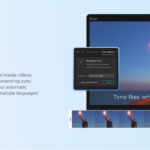Small Language Models (SLMs) are increasingly being integrated into robotic systems for real-time decision-making tasks due to their compact size, lower computational requirements, and efficient inference capabilities. These models, typically consisting of tens to hundreds of millions of parameters, offer a balance between performance and deployability, making them suitable for embedded systems and edge devices where large-scale models like GPT-4 are impractical. As robotics continues to evolve towards greater autonomy, adaptability, and human-robot interaction, SLMs have become pivotal in enabling robots to understand instructions, process environmental data, and respond intelligently in dynamic settings.
1. What Are Small Language Models?
SLMs are neural networks trained on textual data to understand and generate human-like language, similar to their larger counterparts. However, they are designed to be computationally efficient and lightweight, allowing them to be deployed on devices with limited processing power, such as microcontrollers, Raspberry Pi boards, or onboard GPUs used in mobile robots and drones. These models are often distilled versions of larger models or specifically trained architectures (like DistilBERT, TinyGPT, or LLaMA variants) optimized for fast inference.
Despite their smaller size, SLMs can still perform a wide range of language tasks, including intent recognition, command parsing, question answering, and dialogue generation, making them ideal for real-time interaction in robotics.
2. Key Use Cases in Robotics Decision-Making
A. Natural Language Command Processing
One of the primary roles of SLMs in robotics is interpreting human-issued instructions. For service robots or collaborative industrial robots (cobots), understanding verbal or textual commands accurately and swiftly is critical.
For instance, a home assistant robot might be instructed to “pick up the red mug from the kitchen table.” An SLM can parse this instruction in real-time, extract actionable components (object: red mug, action: pick up, location: kitchen table), and feed this data into the robot’s perception and motion planning modules.
Larger models would be too slow or resource-intensive for this on-device task, especially if the robot operates offline or in bandwidth-constrained environments. SLMs, being lighter, can process such commands with minimal latency.
B. Dialogue Systems for Human-Robot Interaction
SLMs are increasingly embedded into dialogue systems to facilitate interactive decision-making. In warehouses, for example, robots might ask clarifying questions when they encounter ambiguous instructions. A small model can be used to detect the ambiguity, generate a relevant clarification query (e.g., “Do you mean the small or large box?”), and handle the user’s response accordingly.
These dialogue loops require quick turnarounds and seamless integration with perception and planning systems, which is more achievable with SLMs due to their efficiency.
3. Real-Time Decision Support in Dynamic Environments
Robots operating in unstructured or changing environments—like search-and-rescue drones, delivery robots, or agricultural bots—must constantly make decisions based on partial or evolving information. SLMs contribute by enabling natural language-based planning, policy adaptation, and real-time communication.
A. Scenario-Based Planning
SLMs can be fine-tuned to act as lightweight planners that interpret high-level goals and convert them into actionable steps based on sensor data. For example, in a robotic exploration mission, the system may receive a goal such as “map the area near the collapsed structure and report any movement.” The SLM can generate sub-tasks (e.g., move to location A, scan area, detect motion), which are then executed by lower-level control systems.
The benefit of using SLMs here is their capacity to generate interpretable and modular sub-tasks in natural language, which can be directly mapped to robot APIs or task libraries. This makes them particularly useful for integrating with behavior trees or task planners.
B. Sensor Fusion Interpretation
SLMs can also assist in interpreting the results of multi-modal sensor fusion. For instance, in a warehouse setting, if a robot detects an obstacle using lidar and also picks up a thermal anomaly through infrared sensing, the SLM can help contextualize these signals with a pre-trained model that includes environmental knowledge and safety protocols. It might output a decision like: “detour to the left; potential fire hazard ahead.”
This real-time interpretation facilitates safer and more context-aware navigation decisions.
4. On-Device Learning and Adaptation
SLMs can support few-shot or continual learning frameworks where a robot incrementally adapts its behavior based on user feedback or new tasks. For example, if a user repeatedly refers to a certain location as “the nook,” the SLM can be fine-tuned on-device to associate that term with a specific coordinate or room. Over time, the robot improves its semantic understanding of user-specific language.
Because of their small size, SLMs are more amenable to on-device fine-tuning or prompt-based learning, enabling a degree of personalization and adaptability not feasible with larger models.
5. Edge AI and Latency Benefits
In many robotic applications, especially in autonomous vehicles, drones, or mobile robots, latency is critical. Decisions must be made in milliseconds, and reliance on cloud computation introduces unacceptable delays and risks due to connectivity issues. SLMs allow for:
- Faster inference (processing commands or sensor data within milliseconds),
- Offline capability (no need for internet or cloud),
- Lower power consumption is critical for battery-operated platforms.
Because of these factors, SLMs are ideal for real-time applications where quick decision-making is not only beneficial but often a requirement for operational safety.
6. Challenges and Limitations
Despite their advantages, SLMs come with certain trade-offs:
- Reduced contextual understanding: Smaller models struggle with long-term context tracking or complex reasoning.
- Limited knowledge base: Unless fine-tuned regularly, they may lack updated information or domain-specific knowledge.
- Higher error rates: Compared to large models, SLMs are more prone to misunderstandings, which can be critical in safety-critical environments.
To mitigate these, hybrid architectures are often used—where an SLM handles most real-time tasks, and a larger model in the cloud is consulted for complex queries or periodic updates.
Small Language Models are transforming how robots make real-time decisions by providing lightweight, efficient language understanding and planning capabilities. Their ability to parse commands, engage in dialogue, assist in task planning, and adapt to new information—all within constrained computational environments—makes them invaluable in modern robotics. By enabling faster, safer, and more natural human-robot interactions, SLMs are helping bridge the gap between high-level human intent and low-level robotic execution. As these models continue to improve, they will play an increasingly central role in making autonomous robots more intelligent, responsive, and trustworthy in real-world applications. Learn more about small language models at arcee.ai.

























